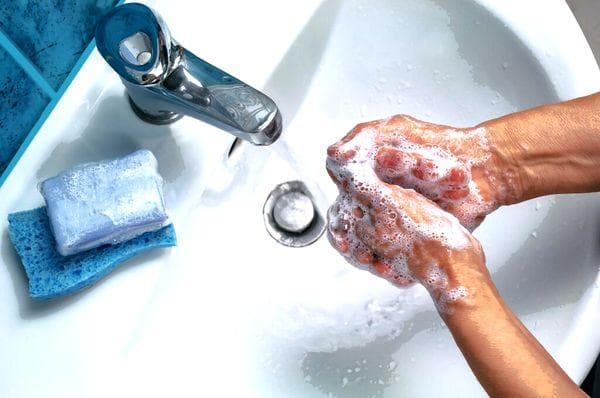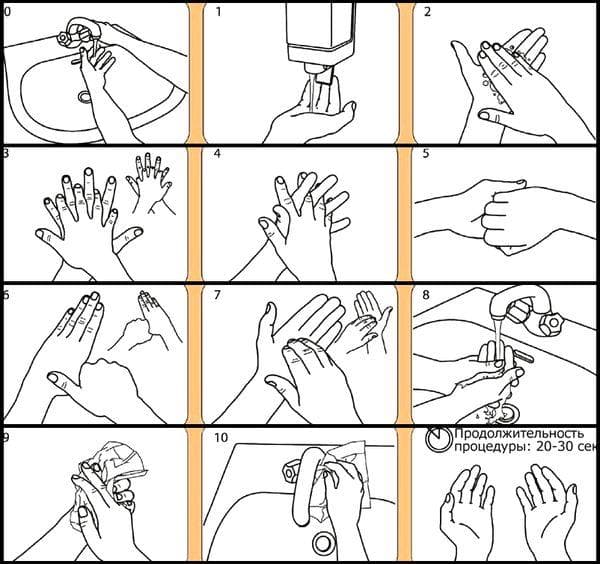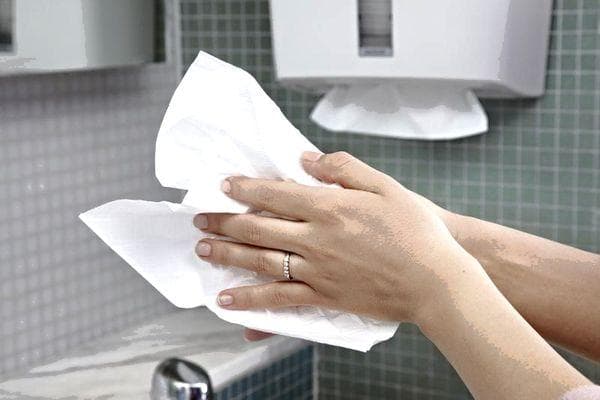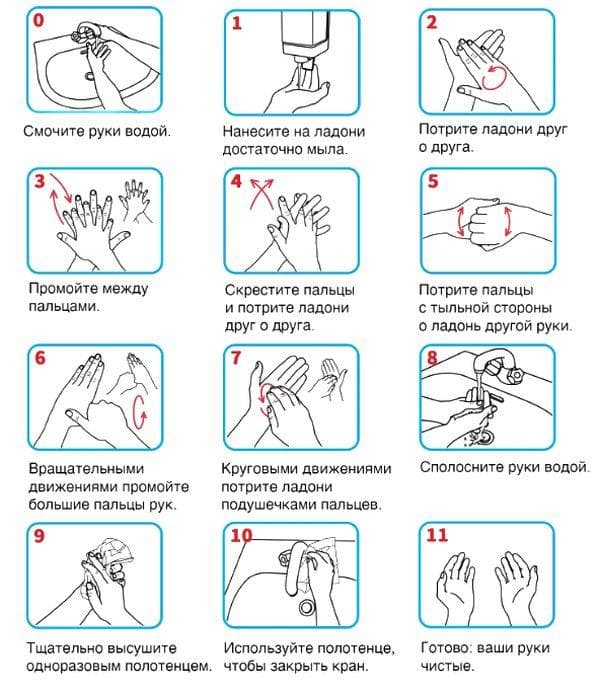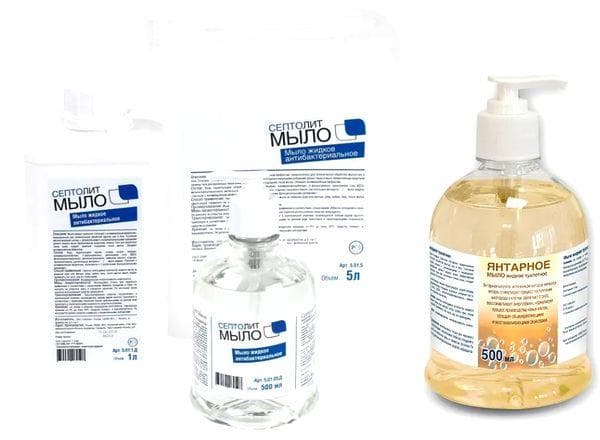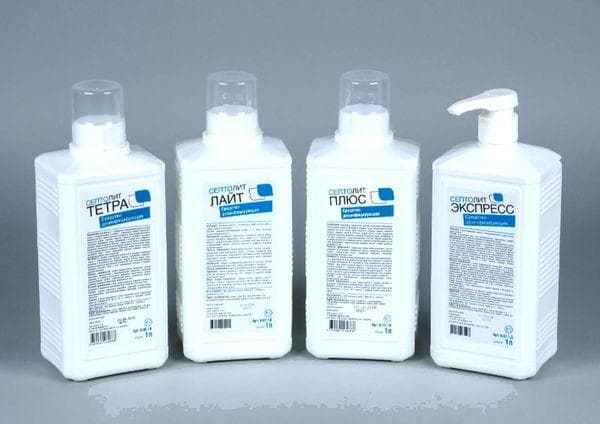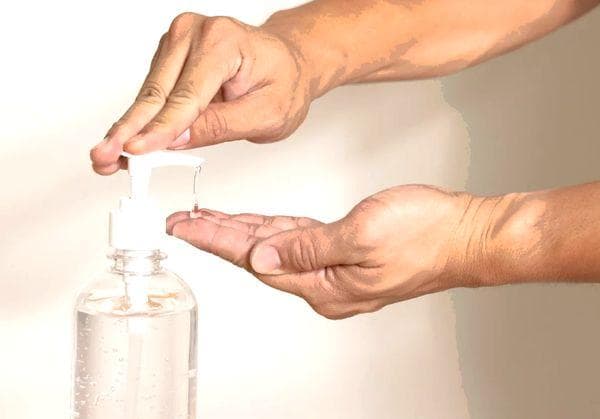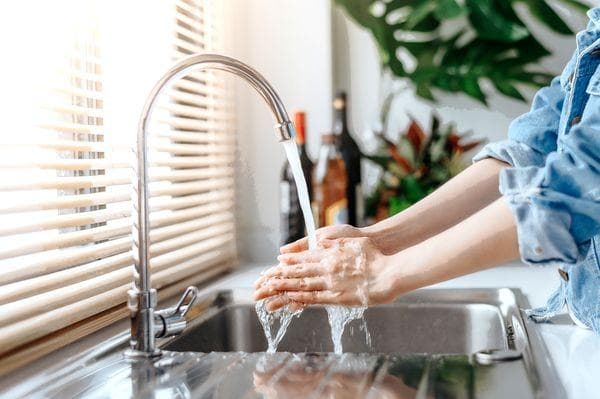How to wash your hands according to all the rules and regulations - instructions for children and adults
Content:
It is well known that maintaining hand hygiene is the key to protection against infectious diseases. But not everyone knows how to wash their hands correctly so that these simple manipulations give the expected result. This issue is especially acute during the COVID-19 pandemic.
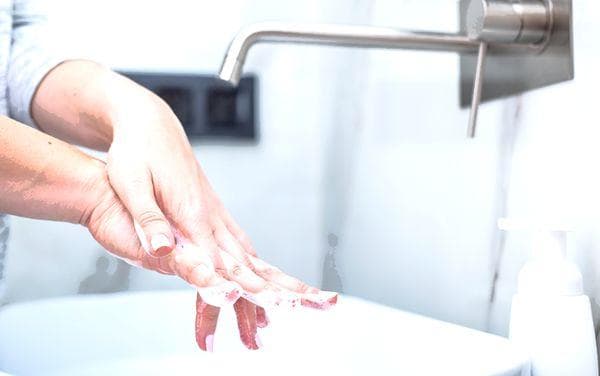
When is it necessary to wash your hands?
Following good hand washing hygiene prevents many diseases. These are infectious diseases, food poisoning, helminthic infestation. For example, when coughing or sneezing, a person impulsively covers his mouth with his hand. After this, he can touch the door in a store or transport, spreading pathogenic bacteria. Thus, hands become a dangerous factor in the spread of many infectious diseases. Therefore, to reduce the risk of infection, it is necessary to thoroughly wash your hands in the following life situations:
| The need for manipulation before: | Performing the procedure after: |
| eating; | cleaning the house or garden; |
| applying cosmetics to the skin of the face; | washing and hanging laundry; |
| installation of contact lenses; | contact with pets; |
| cooking; | after returning from school, gym, work, store and other public places; |
| treatment of wounds. | going to the toilet; |
| touching paper bills. |
Hand washing is a mandatory procedure necessary to reduce the risk of contracting a large number of infectious diseases.
How often should you wash your hands?
The rule requiring the obligatory cleaning of palms before eating and after using the toilet is outdated in the current situation. Today we have to wash our hands quite often. On average - about 6-8 times a day. Namely, after touching:
- buttons in the elevator;
- door handle;
- button on the ATM;
- handrails in the subway;
- any surface in a public place.
It turns out that hands should definitely be washed periodically throughout the day, depending on the frequency of contact with various surfaces located in common areas.
Sanitary standards for hand washing
According to sanitary standards, hand hygiene involves removing any contaminants from their surface. This must be done in order to reduce the risk of transferring pathogenic microflora from one person to another.
Among the mandatory requirements of SanPiN reflected in the Leaflet, the following actions should be performed:
- before washing your hands with soap, you must remove your watches, bracelets and all jewelry due to the accumulation of a large number of pathogenic microorganisms under them;
- roll up the sleeves of your outerwear by 2/3 so as not to interfere with the thorough treatment of your palms;
- lather, foam the soap, spreading it over the entire surface of the hand;
- When using hard soap, rinse it first;
- rinse with plenty of running water;
- Repeat the procedure 2 – 3 times for at least 20 seconds.
A single wash removes dangerous germs only from the skin. Whereas during repeated treatment, the pores open and microorganisms that have penetrated deeper are washed away.
Drying hands with electric dryers is not recommended. It is better to use disposable paper towels.
Instructions on proper hand washing according to WHO
According to the recommendations of the World Health Organization, you need to wash your hands often in order to avoid infection with coronavirus and not become a carrier of it. And also prevent the possibility of poisoning, seasonal flu, acute respiratory viral infections, and helminthiasis.
The WHO Instructions describe in detail the algorithm for thorough hand cleaning during the COVID pandemic, as well as during other epidemics:
- Wet your hands under running water.
- Lather your palms using liquid or bar soap.
- Lather the soap well by rubbing your palms, wrists and hands.
- Carefully wipe between your fingers.
- With special care, you should wash your thumbs and the tips of your other fingers by rubbing them on the palm of your other hand.
- Rinse off the soap suds.
- Close the tap using a disposable cloth.
The entire procedure lasts at least 20 - 30 seconds. Disposable towels or dry wipes are the only correct solution for drying your hands.
Features of hand washing in children
According to experts, few children, especially preschool children, know how to wash their hands properly.This becomes a serious prerequisite for the accumulation of a large number of dangerous microorganisms on their hands.
The memo from SanPiN and Rospotrebnadzor, developed on hand washing, contains additional information, noting that there is a simplified scheme of recommendations for children and their parents:
- We need to help the child roll up his sleeves.
- Turn on the water tap.
- Wet your palms and lather the child's palms with soap.
- Show how to rub them against each other.
- Rinse off the soap.
- Dry your palms with a dry towel.
Great responsibility for instilling basic sanitary and hygienic skills in children falls on parents. Mastering a sequential algorithm of actions is the key to children's health.
Hand wash with water
Depending on the situation, various methods of hand treatment are used - household and hygienic.
For household cleaning, it is enough to clean your hands with water and liquid or solid soap. This method removes dirt and surface microflora. It is advisable to give preference to liquid soap with a dispenser. Good examples are liquid Amber soap and antibacterial Septolite.
To prevent re-contamination, it is recommended to use soap with an elbow dispenser.
Hygienic treatment is a more thorough treatment of the palms, involving the use of soap and antiseptics. First, wash your hands as usual with soap. Then they are treated with an antiseptic.
The method is used to disinfect skin. The best skin antiseptics are Septolite-gel and Septolite-antiseptic.After cleansing with soap and water, squeeze out a small amount of antiseptic and rub it in with circular movements of the brushes, carefully treating the nails, subungual areas and interdigital spaces.
It is recommended to use antiseptics with an alcohol content of at least 65 - 70%.
Soap-free processing methods
If you don’t have soap on hand, you can use simple methods:
- According to the rules and regulations for hand sanitization, it is recommended to thoroughly rinse your palms under running water. This method is less effective, but still washes away many pathogenic bacteria. In this case, warm water should be used - at least +25°C.
- If you don't have soap or water, you can use wet sanitary wipes. It would be good if they have a bactericidal effect.
- If you clean your hands without soap and water, then the best way is to use a sanitizer. The processing technique is no different from regular hand washing. After applying the antiseptic to your palms, rub it until it is completely absorbed into the skin. It is recommended to choose an antiseptic that contains an alcohol content of more than 60 - 65%.
Such measures will ensure the disinfection of your palms. But as soon as possible, you should carry out the entire procedure using water.
Advice. When choosing between an expensive antiseptic and regular soap, it is better to use the second option. Not all sanitizers contain a sufficient percentage of alcohol, so clean water and soap remain the best assistants in the fight against infections.
How to prevent infection and not harm your health
Actions taken to prevent infection with coronavirus or other infectious diseases must be reasonable and justified.Therefore, you must be guided by the rules and regulations of SanPiN, WHO and Rospotrebnadzor described above.
Nuances of behavior in the toilet room
All efforts at disinfection will be zero if, after washing our hands after visiting the toilet, we touch any surface in it - the tap, the tank button, the door handle. To keep your palms clean after using the toilet and subsequent hand washing, it is recommended to touch the listed surfaces using a disposable napkin or paper towel.
About behavior in public places
To maintain your health when visiting public places (transport, shops and other premises), you must follow all the described measures for visiting the toilet. Avoid repeated touching of any surfaces.
If there is no place to wash your hands, use an antiseptic that you can always carry with you and clean your palms from time to time.
In addition, it is recommended to wear a mask and rubber gloves. If they are not available, use paper napkins or towels again. Keep your distance. When you return home, treat your palms.
Possible harm from frequent hand washing
If you wash your hands too often, using detergents, antiseptics and antibacterial products, this can result in:
- excessive dryness of the skin;
- violation of the protective layer of the skin;
- removing beneficial bacteria;
- the appearance of microcracks on the skin of the hands.
In addition, it is possible to have an allergic reaction to chemicals contained in detergents.
Quick hand washing
The most common mistake when treating palms is not spending enough time on the procedure.
Average statistics show that most people (more than 95%) wash their hands very quickly, literally within 6 seconds. While it takes at least 25 to 30 seconds to effectively get rid of germs.
Risks of violating sanitary standards
If you ignore the recommendations and rules regarding hand washing, the consequences can be very sad:
- the risk of contracting COVID increases significantly;
- dirty hands are a direct path to intestinal infectious diseases, hepatitis, helminthic infestation;
- danger of food poisoning.
The risk of developing allergies to chemical components contained in any household chemicals increases. Even after washing and washing dishes, you should thoroughly wash your hands of detergents.
Questions and answers
IN: How often can you use a sanitizer?
ABOUT: As needed depending on frequency of contact with surfaces in public areas.
IN: Do I need to treat my hands with antiseptic at home?
ABOUT: It is not necessary. But if, for example, a courier brings you a parcel, then it is advisable to wash your hands after that and wipe with an antiseptic.
IN: Which water is better to wash your hands with – hot or warm?
ABOUT: Hot water makes the skin drier. The best option is warm water no more than 25 degrees.
The most important aspect of hygiene requirements to ensure the prevention of infectious diseases has been and remains thorough hand washing, not only before eating and after using the toilet. In the current situation of the rapid spread of coronavirus infection, you should wash your hands much more often.
